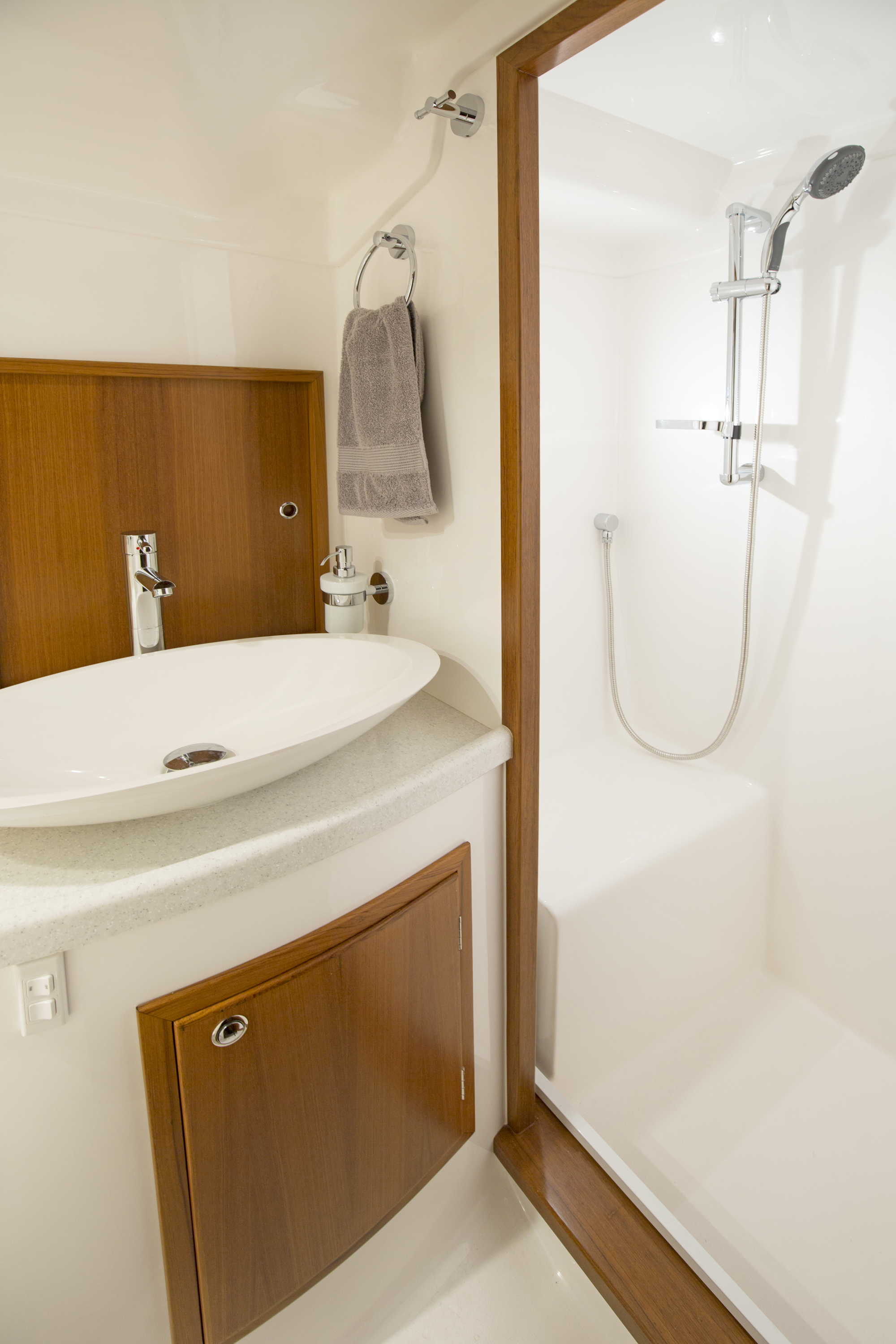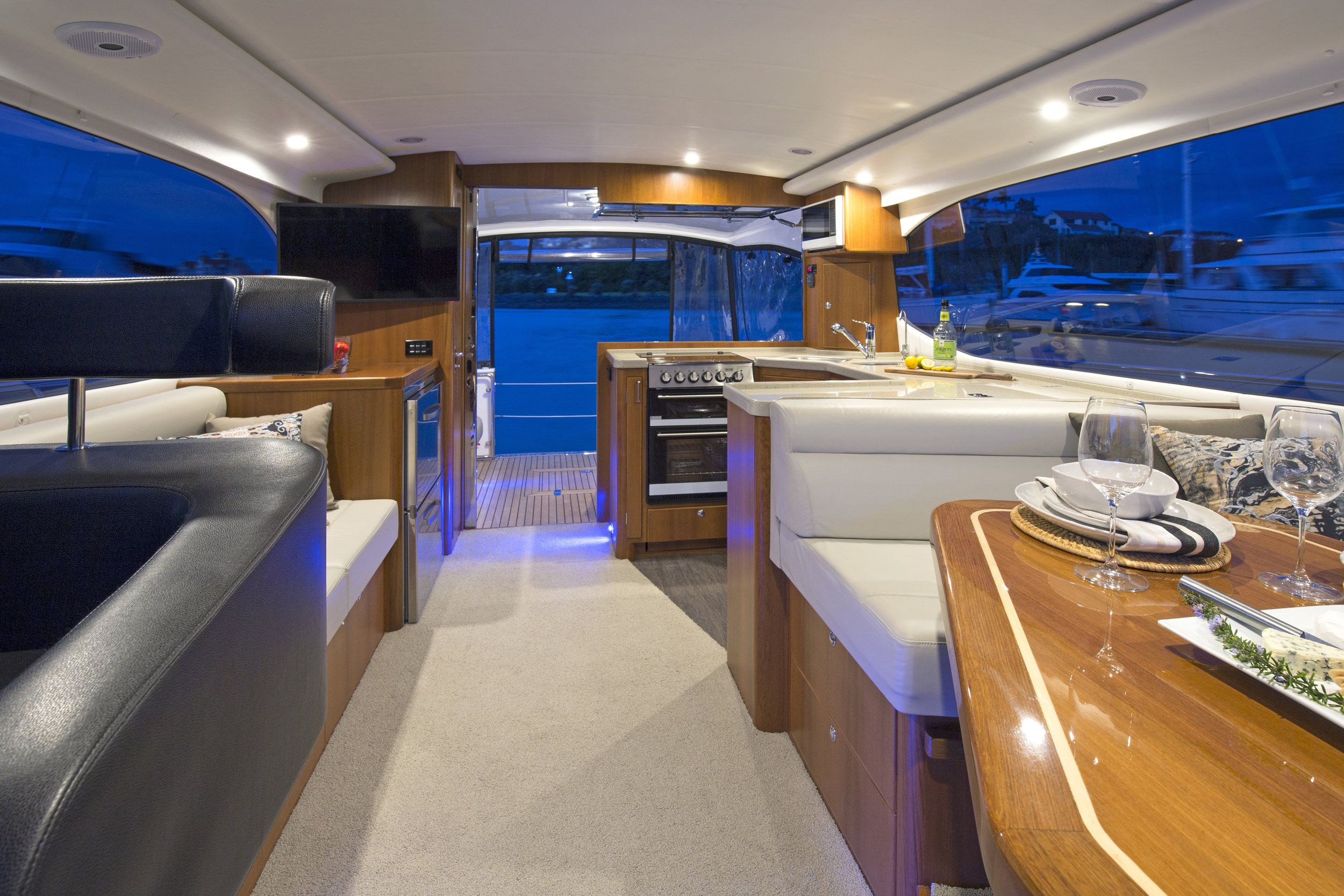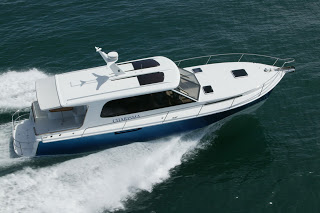We arrived safely at Lord Howe Island shortly after midday the following day after covering 312nm in 23hr 30min, giving us an average of 13.5kts and consumption of 43L/hr. What a beautiful place! The performance of the boat on this leg again showed this boat has no problem in the ocean. During the previous evening the weather had worsened. Well offshore at this stage, the wind had increased to 20-25 SE and sea 1.5-3m, coming from two or three directions with the occasional backless wave. This made for a bumpy ride and required, at times, good hand control over the throttle to stop the boat falling off the waves. At some points we had to reduce speed to 8-9 kts. Sleeping aboard, however, was very comfortable as all the mattresses were spring, and felt like sleeping on a pillow of air as you floated over the waves.
As there was no cellphone coverage on the island we had to make all arrangements for refuelling via VHF. We found out from locals that the fuel truck was filling a Qantas plane and we would have to wait our turn but also, being low tide, there would be insufficient depth at the public jetty for three to four hours. I decided to launch the tender and go ashore to check the depth myself. The boat draws 1.1m together with the extra weight on the transom, maybe 1.5m. At the jetty I checked the depth with the 1.6m oar from the tender which didn't touch the bottom. We then manoeuvred the boat alongside the public wharf. The Fuel Price on the island was only AUD $2.85/L!! We took on 1000L, giving us a total of 3100L aboard. With 810nm to Opua we now had enough fuel to keep going at a minimum speed of 15kts with fuel to spare.
It was 1530 when we left Lord Howe Island, three hours after our arrival. Near perfect conditions prevailed, with flat rolling seas and under 10kts of wind. We put the throttle down and as long as the fuel burn was 60L/hr we took whatever speed we could achieve, as the rear tanks emptied the speed got higher and higher. Starting at 15/17 kts, by the end of the trip we were averaging 18/19 kts. The conditions were so calm I was even able to cook a Japanese curry on a non gimballing stove with the sauce full to the brim.
After a short pit stop, trawling (unsuccessfully) for Kingfish and Tuna around the Three Kings at lunchtime the net day, we docked in Opua, less than 3.5 days after leaving Coffs Harbour. The following day we cleared Customs and Immigrations and made our way to Tutukaka Harbour for the handover to the happy new owners. The final short leg was a great chance to finally open up the throttle and experience the boat in its prime. We trimmed the bow down, eating up the short sharp 1.5m waves, slicing through them like a knife through butter as we left The Bay of Islands heading East. Heading south we were able to surf the waves. The boats top speed is 26 kts and 140L/hr at 3600RPM.
All in all a great trip in a fantastic sea boat. Well-built and comfortable, The Salthouse Cabriolet 49 handled all the conditions without missing a beat.
For more information on boat deliveries, training or boat management and maintenance, please contact Hamish MacAdie, of HTM Services, on hamishmac@iimetro.com.au or phone +61 (0)402 343 694.




















